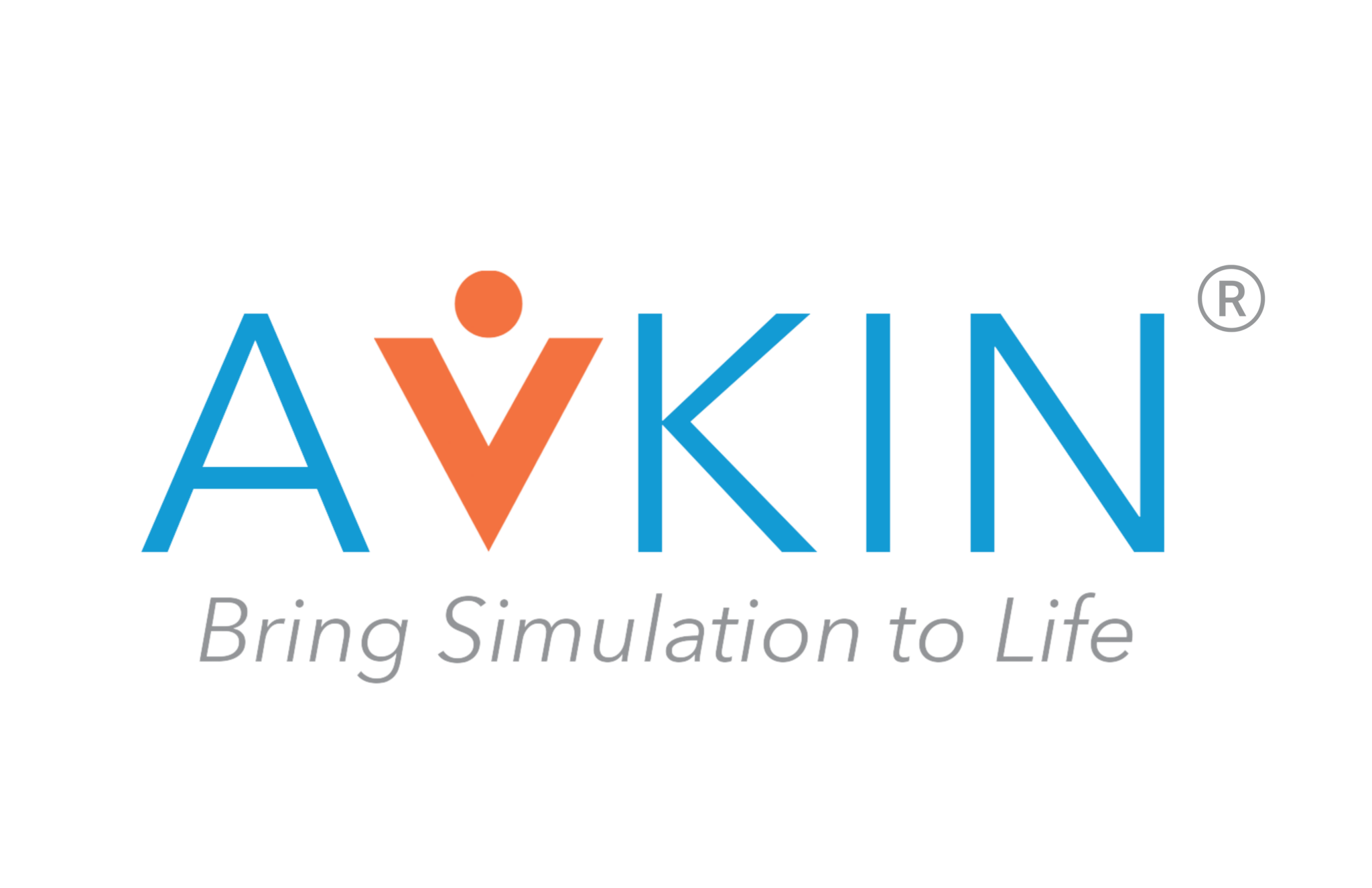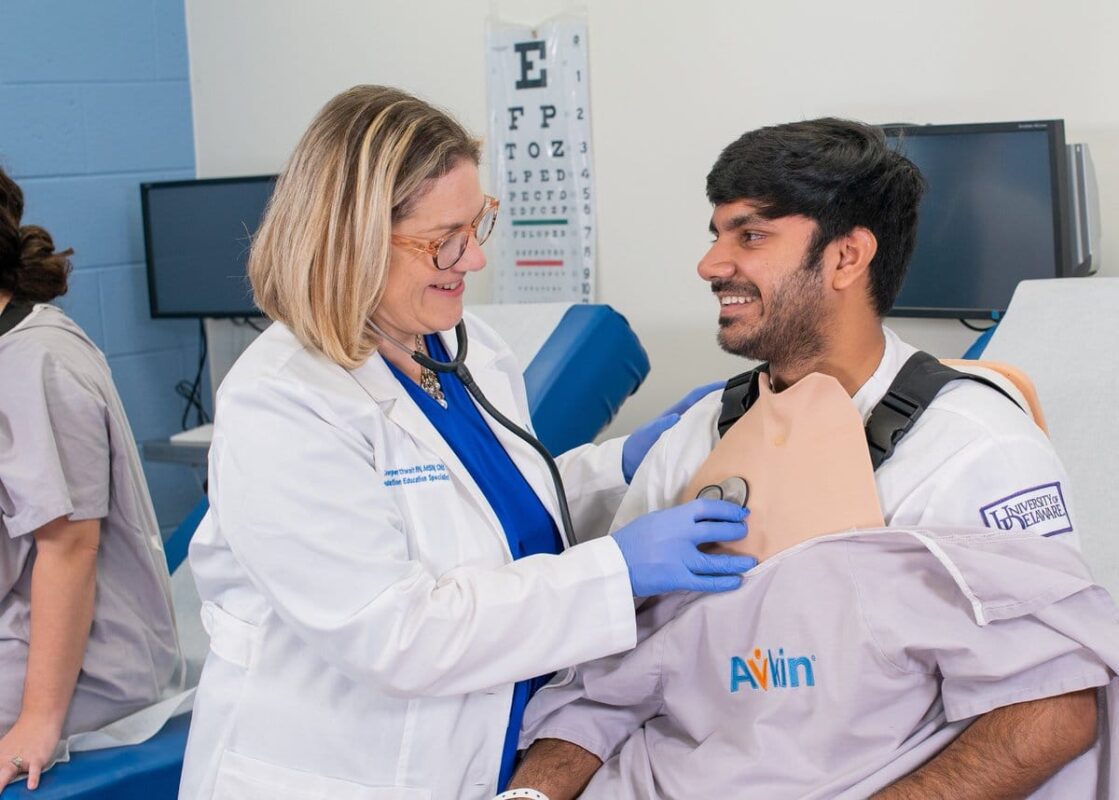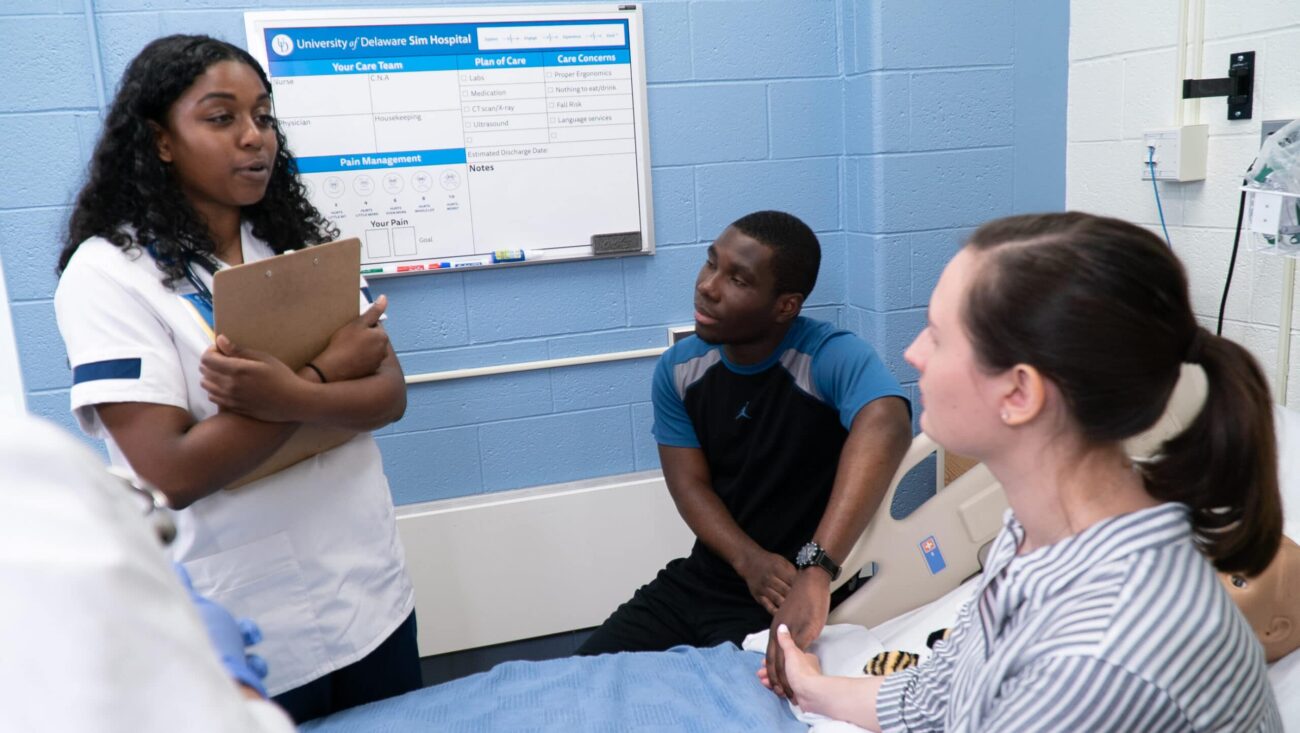Earpieces may harm your simulation

The use of earpieces has become a trend in Simulated Participant simulation. While seemingly logical, the need to use this distracting tool is a symptom of a much larger issue; your SPs need more details.
It is common practice to type a short paragraph describing the patient, then use the earpiece to radio in responses not considered in the character’s description. This approach sells both your learner and the SP short, compromising the fidelity of the learning experience and jeopardizing learner outcomes.
- Emotional Fidelity
We depend on emotional fidelity in SP simulation. Emotional fidelity is the extent that learners treat the simulation as if it were a real interaction. A foreign voice in the interaction, one which wouldn’t exist in real life, hampers the SP’s voice and emotional fidelity is compromised. Learners will recognize the lag in patient responses, or even worse, a canned response which doesn’t fit the context of the simulation. Disingenuous interaction can change the trajectory of the simulation, leading to the standard excuse, “If it were a real patient, I would have done…”
The movie Inception comes to mind when thinking about this concept. Cobb (Leonardo DiCaprio) works in the world of dreams. In the film, he implants ideas into subjects’ subconscious. Cobb and his team must work to ensure the idea seems authentic; else, the person will reject the idea and hunt down the mental intruders.
If an SP is being to get angry, but it is not authentic to the simulation, the learner’s amygdala will be triggered. They will start to look for other character breaks and fidelity will be lost. The earpiece in this instance harmed fidelity by becoming a distraction.
- Proper Training
Actors do not wear earpieces on stage. Shakespeare did not whisper lines to Romeo and Juliet. This would ensure the words would come out, and be in the right order, so why aren’t these tactics used?
The actors have been trained.
Institutions rely on earpieces to save time that should have been spent training. It is paramount that actors are well-prepared ahead of time before the first simulation. ASPE felt it was so important, domain three focuses entirely on SP training.
A well-developed character is vital when using people in simulation. But that alone won’t get you there; they need education on standardization, feedback coaching, and a one-hour dress rehearsal specific to their character. The dress rehearsal should include the SP acting in all phases of the simulation. IF there are multiple SPs, all should attend, participate, and integrate the coaching notes into their simulation.
- Building Instincts
SPs should become the expert on the patient they are portraying. Simulation faculty must consider all aspects of the simulation. SPs are a huge benefit to instructors, who can now solely focus on the learner and notes for debriefing. An earpiece will become a crutch for the actor, stifling their ability to react as the patient because they are ‘programmed’ to rely on instruction from the earpiece. If asked a question that was not in the description, they will instinctively wait for instruction, rather than own the character they portray.
A rookie SP may feel comfortable having an earpiece to guide them, same as drivers education car having a brake pedal for the instructor. If the new driver becomes dependent on the extra brake covering their mistakes, they will doubt their ability to drive in unusual circumstances they didn’t practice; never learning to venture out and rely on their own instincts. Just like the driver, an SP dependent on an earpiece will lead to a clunky, frustrated experience with no one person driving the car.
- Including the SP instead of Using the SP
With a manikin, instructors use a microphone to speak through the head of the manikin. A live person, however, can free the instructor by thinking for themselves. If an SP begins to feel like a puppet, they are unable to make authentic choice and may become resentful or bored. They won’t feel they are contributing significantly to the learners and may leave the SP program.
Like anyone else involved in the simulation, SPs should feel they are in a two-way relationship. One way to do this is to highlight the unique viewpoint of SPs, and celebrate their successes. The more they are included in the educational process, the more likely they are to stay and add to the sustainability of your program.
- Managing Other Distractions
Experienced SPs know there are many balls to juggle in a simulation. They must memorize the character background, portray that authentically in simulation, consider feedback for debriefing, all while maintaining a conversational tone. When adding a foreign voice to the simulation, those areas of concern slip to the back burner. If an SP can’t understand what is being requested, they will miss key moments because their focus was taken from learner and moved to the educator talking to them.
Using key strategies and proper training solve many of the problems that simulation faculty try to fix with an earpiece. Diving deeper int SP Methodology essentials will guide your team in solving the issue, rather than adding even more complexity.
Avkin’s new Avband provides simple two-way communication without adding foreign voices or distractions to your simulations. Educators can signal SPs with vibrations and LEDs, and the SP can signal back with a button on the watch. All of this communication can be done without alerting the learner, and empowers your SP to own the role and react genuinely.



